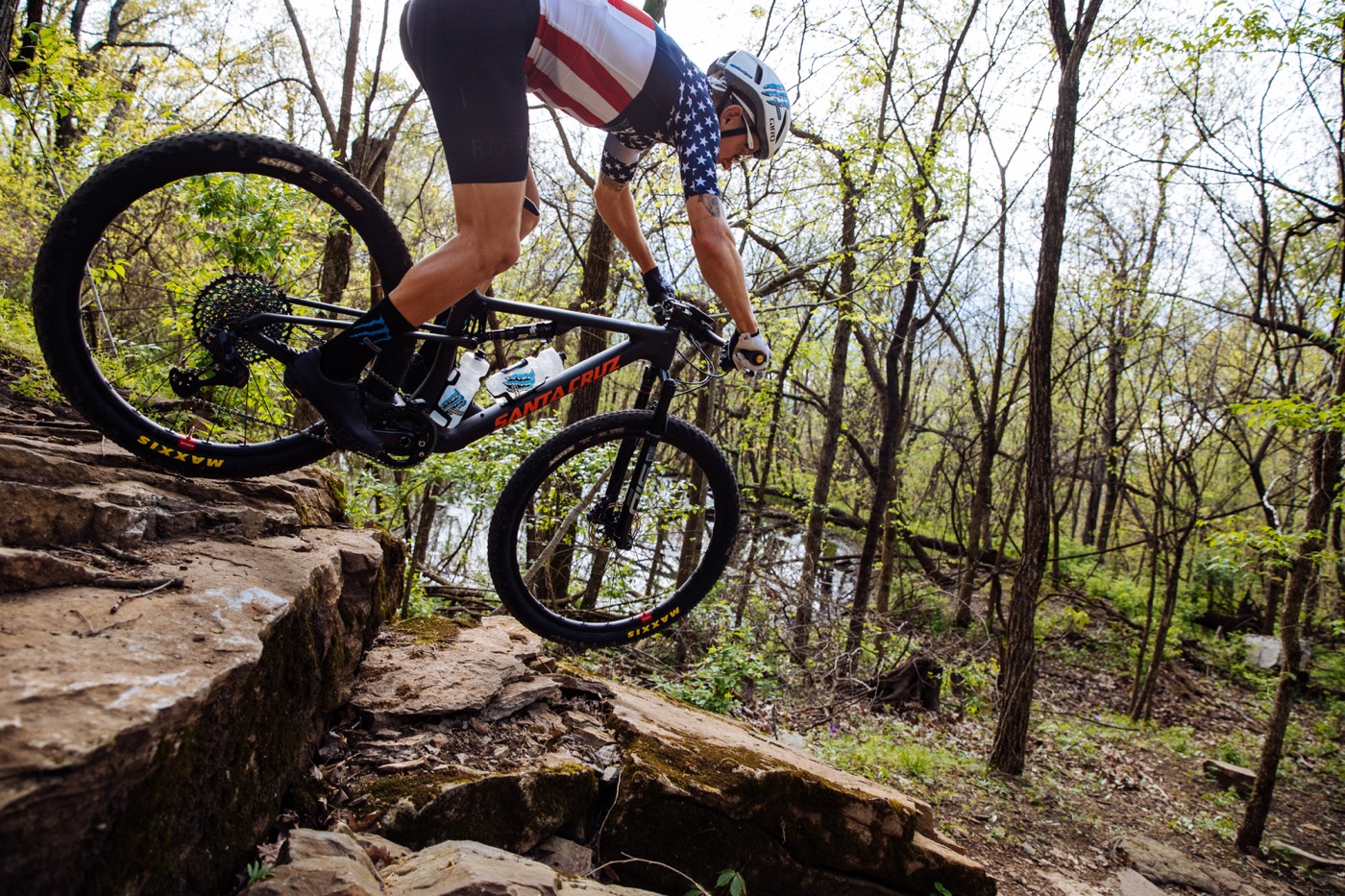On June 1st, the Santa Cruz Blur and Juliana Wilder appeared across news sites and social feeds around the world. If you pay attention to global cross-country racing, you probably weren’t that surprised. With French star Maxime Marotte joining a new Santa Cruz World Cup team. You don’t roll into the World Cup sphere if you don’t have a new bike on the way.
The Santa Cruz Blur and Juliana Wilder are based on the same all-carbon frame. They are full suspension bikes without a VPP link, which has allowed Santa Cruz to cut almost 300g from the frame weight.
If you’re on the hunt for a new XC, marathon or stage race bike, there are a few details that will grab you:
- Room for two bottles inside the main triangle. And a third beneath the downtube
- A slacker head angle, with steeper seat angle and longer reach
- XC and TR variants, for 100mm and 115mm rear travel respectively
- Threaded bottom bracket shells
- Flexstay swing arm – less moving parts
- There’s room for a tiny chain guide – as chain security counts!
- There’s a lifetime frame warranty
- Santa Cruz also announced a new 28mm, 24 hole Reserve rim with a 385g weight

Santa Cruz Superlight: New suspension
The Blur and Wilder also mix some of the old, namely the Superlight name, which has gone from being an older model in the Santa Cruz lineup, to being the name for the rear suspension. With the VPP link gone, Santa Cruz instead loaded up the full carbon swingarm to do the job. This isn’t the flexstay you’ll see on an Orbea Oiz or Merida Ninety-Six. Instead, the flex is engineered into the long seat stays instead. It’s claimed this allows more control over the leverage curve for the suspension’s performance.

Santa Cruz say they have achieved a low leverage curve with low amounts of anti-squat. So that means less input from the chain on suspension (ie, bob) and they say greater traction as well. And that’s the aim of suspension after all. The aim was to have, in their words, a smart frame and a dumb shock. This means a shock that isn’t a custom fit for the Blur or Wilder. The frame design does the work, the shock does suspension. Lots of frame designs have moved this way, to let suspension items to their key job, of providing support and control. And traction!

Ditching the VPP is all part of the weight saving, and Santa Cruz claim a weight of 1933g for the large frame with the SidLuxe shock, and hardware (but not the through axle). That’s pretty damn light, and throw in the water bottle capacity, updated geometry and lifetime frame warranty and this looks pretty attractive.

All about that geo from Santa Cruz
Longer, lower, slacker – right? The last new Blur left some riders wanting in the geo department – although for others it was spot on. Bike handling tends to be like that, given we all have different preferences. But the new frame has size specific geometry, something a number of brands have.

This means things like the rear centre (chain stay) is proportionally longer for larger bikes, to keep the rider centred.

The longer reach is matched to a 60mm stem, to keep the front planted and to work well with wider bars. with a 68.3 degree head angle (67.1 on the Trail variant) and a 75.8 degree (large, XC variant) seat angle, the 470mm reach (large, XC variant) puts the new design right in the middle of the park for new XC bikes. There are longer bikes, and slacker bikes, but there are also steeper and shorter ones.

These sorts of geometry changes tend to result in a bike that is far more stable at speed and when pointing down rocky chutes. But they remain agile on slower, technical terrain, and tend to climb better with an improved position over the pedals. All these changes work in unison – one change isn’t enough. Don’t be put off by far longer reach numbers if you’re doing a comparison to your current bike. Combined with a much steeper seat angle, you’ll find everything falls in place when on the bike.
XC or Trail?
Santa Cruz make it clear that the TR variant isn’t a trail bike. It’s the same frame with a longer stroke shock that delivers 115mm of travel, to match 120mm travel forks. The spec choices have the Trail variants without remote lock out, while the XC ones have remote lock out. You;ll also find faster tyres on the XC variants, and a lightweight dropper.

The Trail variants get a Fox 34 SC fork, longer dropper posts, beefier tyres and larger rotors. The overall design is still as an XC bike, but it’s a bike with longer legs, suiting rougher courses.
Personally, I think a combination of this spec would be my choice. I often use my Norco Revolver in 120mm spec with 2.4″ Maxxis Rekon tyres and nice wide, light rims. But I keep the remote lock out. I’d happily have less cables, but if the bike is an XC bike with more travel and a stiffer fork for rougher race courses – why give up that rock solid lock out at your fingers?
Is the Wilder women’s specific?
Yes, but it’s not a different frame design. The build kit should suit women more than men, but of course sizing and fit is always personal.

There are S, M, L sizes (no XL like the Blur) and it’s only in the TR variant for stock builds. Still, it is available in the C and CC carbon options, so Wilder riders aren’t limited to frame quality.
For full build options and pricing, head to the Santa Cruz website and find your local dealers.
